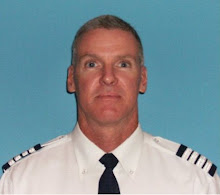Mountain Run
The most scenic area of Iraq is the northeast portion of the country. When the weather is good  and time/cargo permits, one of the favorite routes back to base is what we refer to as the “Mountain Run”. A typical flight path enters the Zagros Mountains, which is a chain of parallel ridges that start in Turkey and separates much of Iraq from Iran. The ridges of the Zargos in Iraq range from 4,000-11,000 feet in elevation. The highest peak in Iraq is Haji Ibrahim at 11,811 feet.
and time/cargo permits, one of the favorite routes back to base is what we refer to as the “Mountain Run”. A typical flight path enters the Zagros Mountains, which is a chain of parallel ridges that start in Turkey and separates much of Iraq from Iran. The ridges of the Zargos in Iraq range from 4,000-11,000 feet in elevation. The highest peak in Iraq is Haji Ibrahim at 11,811 feet.
In addition, the Zab and Diyala rivers originate in the Iranian section of Zagros Mountains and eventually feed into the Tigris River. When flying by the Zab River we can see the Dokan Dam. A flight along the Diyala River reveals the Darbandikhan Reservoir, which is 18 miles long by 6 miles wide. When the war began in 2003, there was concern that Saddam Hussein would use these reservoirs to cause catastrophic flooding.
Just east of the Darbandikhan Dam is the Iraqi Kurdish town of Halabja. This town was the site of the greatest chemical weapons tragedy in modern warfare. During the 1980 Iran-Iraq War, the Iranian army took control of Halabja in hopes of gaining control of the Darbandikhan Reservoir water supply. Some of the fiercest fighting of the war ensued in Iraq's effort to retake Halabja. Shortly before the war ended in March 1988, the Iraqi Kurds living in Halabja were exposed to multiple chemical agents, killing thousands of the towns residents. This event was one of the reasons used to justify the invasion of Iraq. In 2003, President Bush was referring to Halabja during his State Of The Union speech when he said “The dictator who is assembling the world's most dangerous weapons has already used them on whole villages, leaving thousands of his own citizens dead, blind or disfigured”.
exposed to multiple chemical agents, killing thousands of the towns residents. This event was one of the reasons used to justify the invasion of Iraq. In 2003, President Bush was referring to Halabja during his State Of The Union speech when he said “The dictator who is assembling the world's most dangerous weapons has already used them on whole villages, leaving thousands of his own citizens dead, blind or disfigured”.
How ironic...a place with such beauty was the stage for so much misery.
 and time/cargo permits, one of the favorite routes back to base is what we refer to as the “Mountain Run”. A typical flight path enters the Zagros Mountains, which is a chain of parallel ridges that start in Turkey and separates much of Iraq from Iran. The ridges of the Zargos in Iraq range from 4,000-11,000 feet in elevation. The highest peak in Iraq is Haji Ibrahim at 11,811 feet.
and time/cargo permits, one of the favorite routes back to base is what we refer to as the “Mountain Run”. A typical flight path enters the Zagros Mountains, which is a chain of parallel ridges that start in Turkey and separates much of Iraq from Iran. The ridges of the Zargos in Iraq range from 4,000-11,000 feet in elevation. The highest peak in Iraq is Haji Ibrahim at 11,811 feet.In addition, the Zab and Diyala rivers originate in the Iranian section of Zagros Mountains and eventually feed into the Tigris River. When flying by the Zab River we can see the Dokan Dam. A flight along the Diyala River reveals the Darbandikhan Reservoir, which is 18 miles long by 6 miles wide. When the war began in 2003, there was concern that Saddam Hussein would use these reservoirs to cause catastrophic flooding.
Just east of the Darbandikhan Dam is the Iraqi Kurdish town of Halabja. This town was the site of the greatest chemical weapons tragedy in modern warfare. During the 1980 Iran-Iraq War, the Iranian army took control of Halabja in hopes of gaining control of the Darbandikhan Reservoir water supply. Some of the fiercest fighting of the war ensued in Iraq's effort to retake Halabja. Shortly before the war ended in March 1988, the Iraqi Kurds living in Halabja were
 exposed to multiple chemical agents, killing thousands of the towns residents. This event was one of the reasons used to justify the invasion of Iraq. In 2003, President Bush was referring to Halabja during his State Of The Union speech when he said “The dictator who is assembling the world's most dangerous weapons has already used them on whole villages, leaving thousands of his own citizens dead, blind or disfigured”.
exposed to multiple chemical agents, killing thousands of the towns residents. This event was one of the reasons used to justify the invasion of Iraq. In 2003, President Bush was referring to Halabja during his State Of The Union speech when he said “The dictator who is assembling the world's most dangerous weapons has already used them on whole villages, leaving thousands of his own citizens dead, blind or disfigured”.How ironic...a place with such beauty was the stage for so much misery.



0 Comments:
Post a Comment
<< Home